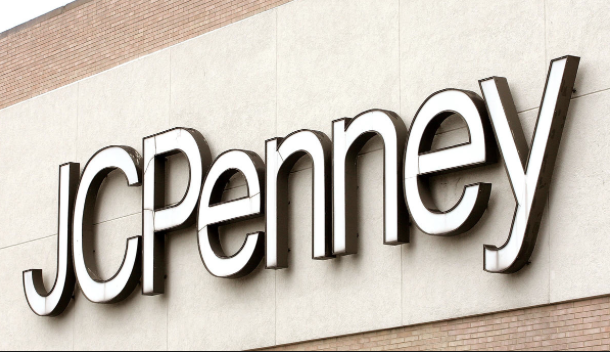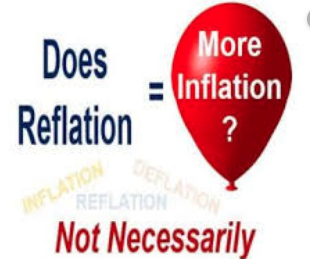In Q3 2017, J.C. Penney managed to grow comp sales by 1.7%; this after warning investors that sales would only come in at up .7% due to certain apparel liquidations in the Q3 2017 period. So what actions did the company embark upon to find comp sales growth in both the Q3 and Q4 2017 period? Much of the comp sales growth can be attributed to a smaller, more profitable store base as a result of closing some 130 stores in the Q2 2017 period. By eliminating these stores from the comp base, the remaining chain store sales dramatically shift, showing positive sales found in the remaining comp store sales base. In addition to closing underperforming stores, certain categories of apparel were liquidated, impacting profitability, but accelerating sales transactions and with inventory declining nearly 9% during the Q3 2017 period.
Upon issuing Q3 2017 results, J.C. Penney narrowed its comp sales guidance to reflect a -1% – flat sales comp for FY17. Following up on J.C. Penny’s improved sales in the Q3 2017 period, the retailer positively updated its sales for the November-December, 2017 Holiday period. Again, it is important to recall, that this sales update benefitted from the elimination of underperforming stores as well as improved consumer sentiment from tax reform passage. And this brings us to J.C. Penney’s most recently reported, Q4 2017 results. Last week, J.C. Penney reported as follows:
- Q4 2017 EPS of $.57 a share, beating analysts’ estimates by roughly $.10 per share.
- On the top line, the retailer reported $4.03bn, a 1.8% sales increase, but missing analysts’ estimates by roughly $20 million.
- Not a bad quarter and finding the retailer with 2 consecutive quarters of positive sales comps.
- For fiscal 2017, J.C. Penney delivered positive sales comps and improved adjusted earnings per share by 175% to $0.22 per share.
- Debt outstanding was reduced by approximately $600 million in 2017.
- Generated over $200 million of free cash flow in 2017.
- Q4 2017 positive comp sales of 2.6%. The comp sales improvement was led by an increase in average unit retail, units per transaction, and positive traffic.
- Q4 2017 gross margins improved by 50 basis points.
- Comp sales were slightly positive for the fiscal year while total net sales declined 30 basis points.
- The spread between total net sales and comp sales was primarily due to store closures, partially offset by an increase in sales for the 53rd week.
The sales improvement in the back half of 2017 for J.C. Penney suggests the early portions of 2018 will be found with continued sales improvements. Having said that, it is keenly important to recognize that management has been marred by ongoing, operational restructuring that has found forecasting in error quarter after quarter. Given managements inability to achieve stated guidance in the previous 7 out of 8 quarters, investors remain skeptical with regards to recent results and the offered guidance for 2018. Nonetheless, it may not be prudent for investors to disregard the potential and recent quarterly trends in comp sales. Ongoing measures taken by management to maintain improving sales have been offered for 2018.
Over the last 18 months, J.C. Penney has been found revamping and remodeling its chain stores. These remodels have been centered on driving greater foot traffic and dollar/sq. foot performance. Major appliances were first launched in stores as a test program in 2016 and spread across the chain through 2017. While the category of merchandise produces a drag on gross margin performance, it helps to boost sales performance overall. The company has seen strong sales contributions from the appliance category since sales commenced for the category. In the Q4 2017 period, appliance sales delivered growth of over 30 percent. With the closing of all HHgregg stores in 2017 and continued Sears Holdings stores, J.C. Penney stands to take significant market share in major appliances going forward.
Moreover, J.C. Penney has dedicated itself to lessening the impact on sales from weather. Weather related sales impact has proven the undoing of quarterly results for many retailers in recent years, as the effects from global warming become ever-present. The commencement of category sales such as appliances, flooring, HVAC equipment, mattresses (positive comps of 60% in Q4 2017) and business-to-business sales are just a few of the actions taken by J.C. Penney to dampen negative, weather related sales. But even with these initiatives in place, it may take several more quarters for J.C. Penney to express incremental market share gains in these categories of sales.
One area of noticeable sales dominance and continued outperformance for J.C. Penney is in the area of beauty and cosmetics. J.C. Penney’s partnership with Sephora has been a notably best-in-class relationship since launching several years ago and expanded with store-in-store concepts. After opening 70 new Sephora locations in 2017, J.C. Penney now operates 641 Sephora inside J.C. Penney shops, which represent Sephora shops in nearly 75% of stores. Some 30 locations are forecasted to open in 2018, bringing the total of store-in-store concepts to approximately 670 locations.
In addition to Sephora, as a component of beauty and cosmetic sales, is the J.C. Penney salon business known as InStyle. Instyle positively comped in 2017 and in 2018, the retailer plans to rebrand and remodel another 100 salons to reflect the Instyle strategy. For each rebranding of salons to the Instyle concept, J.C. Penney has experienced positive sales performance on average of 400 basis points.
Jewelry is another aspect of J.C. Penney’s beauty business and comped positively in every quarter in 2017 including a double-digit comp in the fourth quarter. When combined with all other beauty categories of sales, J.C. Penney is the only retailer that is offering customers a total beauty solution under one roof. Macy’s has cosmetics and jewelry, but lacks a salon/Instyle.
During the 4th quarter of 2017, and as we revert to discussing the period, merchandising divisions that outperformed the Company comp average were fine jewelry, home, Sephora, footwear, handbags and salon. The home division is another key strategic sales category for J.C. Penney. Furniture sales within the Home category grew some 40% during the fourth quarter.
Apparel is the greatest category of sales for J.C. Penney and as sales trend in the category, the company will trend over time and despite other improving sales initiatives. Apparel is nearly 75% of total sales and dominates J.C. Penney’s sales floor. It is for this reason that the company continues to revamp its apparel assortment and refine inventory. In the 4th quarter of 2017, many apparel sub-categories of merchandise underperformed the total Company comp sales. With that said, improvements to women’s, kids and men’s apparel significantly contributed to the improved gross margins in the fourth quarter. Additionally, inventory control has improved YOY for J.C. Penney. Inventory at the end of the year was approximately $2.8 billion, down 3.2% versus the previous year.
As it pertains to the totality of the retail landscape and shifting consumption habits, retailers are found forced to monetize real estate assets in favor of appreciating strength in cash flow to support omni-channel sales development. J.C. Penney has committed to the monetizing of certain of its real estate and lease ownerships since 2016. In the fourth quarter, the Company completed the sale of a leasehold interest for a net sales price of approximately $50 million. Approximately $20 million of the net sales prices recorded as a reduction to SG&A expenses in fiscal 2017, the remaining $30 million will be recorded as a reduction of SG&A expenses in fiscal 2018.
The tax reform act that became effective in December, also favorably impacted fourth quarter income tax provision by approximately $75 million. This favorable, non-cash impact was primarily attributable to revaluing the firm’s net deferred tax liabilities to a lower combined federal and state tax rate of 26 percent. As such, during the fourth quarter, J.C. Penney was able to repurchase $40 million of its 2020 notes in the open market at prices below par, reducing the total outstanding balance to $360 million. This effort combined with the actions taken throughout the year, reduced outstanding debt by over $600 million in fiscal 2017. In addition to fiscal 2017 debt reduction efforts, the retailer recently retired a maturity at $190 million of notes due February 5, 2018.When taken together, these debt reduction activities improved the liquidity position of J.C. Penney to exceeded $2.3 billion.
For fiscal 2017, J.C. Penney generated $213 million of free cash flow, an increase of $210 million compared to last year. The free cash flow improvement YOY flies in the face of offered, negative analysis by Citigroup’s analyst Paul Lejuez. Back in October of 2017, the analyst downgraded shares of JCP citing the probability of sliding free cash flow.
“Investors should run from the name noting that the high debt burden signals that debt holders control much of the value of the enterprise which means there is less for equity holders as FCF estimates are continuing to slide lower.”
With regards to free cash flow and Citigroup’s offering, free cash flow is expected to remain steady in 2018. And that brings us to 2018’s offered guidance. Keep in mind that J.C. Penney has not been frequently found achieving stated guidance; it has been offered to include much of the following:
- Comp store sales are expected to be in the range of flat to up 2%.
- Adjusted earnings per share are expected to be in the range of $0.05 to $0.25 per share.
- For fiscal 2018, J.C. Penney is expected to close approximately seven stores, and the majority of these will be closed in the second quarter.
- Total net sales will be approximately 430 basis points lower than comp sales in fiscal 2018. This spread will be approximately 560 basis points in the first quarter.
- When you exclude the gains from asset sales, earnings per share is expected to grow in 2018.
- Comp sales in the first quarter are expected to be at the upper end of the annual guidance range.
- Full-year cost of goods sold as a percent of sales is expected to be down moderately versus 2017. In the first quarter, a 40 to 60 basis-point increase in cost of goods sold, as the largest cost of goods sold reductions in the second and third quarter.
- Inventory is expected to be down mid single-digit at year-end.
J.C. Penney remains a struggling retailer, burdened and under the weight of outsized debt when juxtaposed against unstable sales performance. The company had found sales appreciation prior to late 2016 and on the status of very low comps, in part, due to prior management regime overhauls. Restructuring efforts at the retailer and through various management regimes hasn’t proven to stabilize sales growth over the last 6 years, but has sustained business operations and edged the retailer toward profitability.
Sales initiatives remain a constant adjustment in the retail industry and given the headwinds found by the shift from physical storefront sales toward digital/online sales. J.C. Penney currently achieves some 13% of sales from its digit sales platform, having grown significantly YOY and over the last 6 years. The retailer remains committed to its digital sales initiatives through search optimization and increasing its assortment/skus. It should also be noted that JCpenney.com is lagging its peers in the digital, retail sales space.
Most retailers have similar sales initiatives that include a constant revision to apparel assortment, inventory reductions to eliminate or reduce markdowns, improvements to supply chains, expanding product category assortments and the like. Where Finom Group finds differentiation in the J.C. Penney strategy is its delineating of sales away from the effects of weather. Although this is an advantage for the retailer, the scaling of these initiatives carries with it a cost and that cost has been expressed in the share price in recent years and burdened by long-term shareholders.
Tags: JCP M










